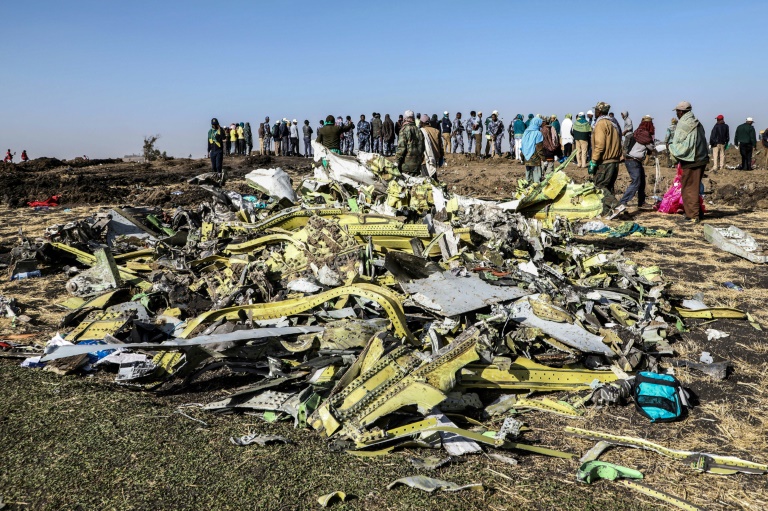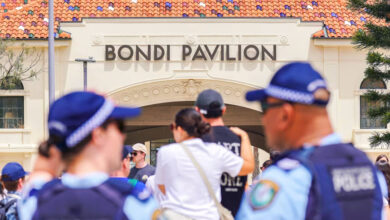
Australia and Singapore on Tuesday banned Boeing 737 MAX planes from their airspace and airlines around the world grounded the jets following a second deadly accident in just five months.
On Sunday a new Ethiopian Airlines 737 MAX 8 went down minutes into a flight to Nairobi, killing all 157 people on board. It came after a Lion Air jet of the same model crashed in Indonesia in October, killing 189.
Investigators have recovered the black box flight recorders from the Ethiopian Airlines plane, which went down near Addis Ababa carrying passengers and crew from 35 countries — including some two dozen UN staff.
US regulators have ordered Boeing to make urgent improvements to the model and insisted they would take action if safety issues are detected.
But it was not enough to reassure aviation authorities in other countries, with Singapore and Australia temporarily banning all 737 MAX planes from their airspace.
China, a hugely important market for Boeing, had already ordered domestic airlines to suspend operations of the plane Monday, as did Indonesia.
Aviation regulators in Singapore, a global air travel hub and popular transit point for long-haul travellers, said they would work with the country’s main airport and “the affected airlines to minimize any impact to traveling passengers”.
One Singapore airline, SilkAir, uses 737 MAX aircraft while a handful of foreign airlines operate the planes in the city-state.
Australia’s regulator said it regretted “any inconvenience to passengers but believes it is important to always put safety first”. Only one Fijian airline is affected by the Australian ban.
South Korea meanwhile ordered the only airline in the country that operates the jets to suspend operations of its two MAX 8s. Argentina’s flag carrier also grounded five MAX 8 aircraft on Tuesday, as did airlines in countries including South Africa, Brazil and Mexico.
But several airlines have said they are not cancelling MAX 8 flights, while US carriers appear to maintain confidence in the manufacturer.
“The Boeing 737 MAX is a highly sophisticated aircraft,” said India’s SpiceJet, which has 13 of the model 8 variant in its 75-strong fleet.
“It has flown hundreds of thousands of hours globally and some of the world’s largest airlines are flying this aircraft,” it said in a statement.
‘Significant industry impact’
Boeing has described the MAX series as its fastest-selling family of planes, with more than 5,000 orders placed to date from about 100 customers.
But not since the 1970s — when the McDonnell Douglas DC-10 had successive fatal incidents — has a new model been involved in two deadly accidents in such a short period.
The weekend crash sent Boeing shares nosediving as much as 12 percent on Monday.
“I think the impact for the industry is significant,” said Gerry Soejatman, a Jakarta-based aviation analyst.
“We have a new type of aircraft — that type of aircraft has only been in service for two years — and … we have two accidents with seemingly similar circumstances.”
The plane involved in Sunday’s crash was less than four months old, with Ethiopian Airlines saying it was delivered on November 15.
It went down near the village of Tulu Fara, some 40 miles (60 kilometers) east of Addis Ababa.
Inhabitants of the remote area looked on from behind a security cordon as inspectors searched the crash site and excavated it with a mechanical digger.
The single-aisle jet had left a deep, black crater.
Ethiopian Airlines said the pilot was given clearance to turn around after indicating problems shortly before the plane disappeared from radar.
The airline’s chief executive Tewolde GebreMariam said the plane had flown in from Johannesburg early Sunday, spent three hours in Addis and was “dispatched with no remark”, meaning no problems were flagged.
The crash cast a pall over a gathering of the UN Environment Programme as it opened in Nairobi — at least 22 staff from several UN agencies were on board the doomed flight.
Delegates hugged and comforted one another as they arrived at the meeting with the UN flag flying at half-mast.
Other passengers included tourists and business travelers.
Kenya had the highest death toll among the nationalities on the flight with 32, according to Ethiopian Airlines. Canada was next with 18 victims.
There were also passengers from other countries including Ethiopia, Italy, the US, Britain and France.




